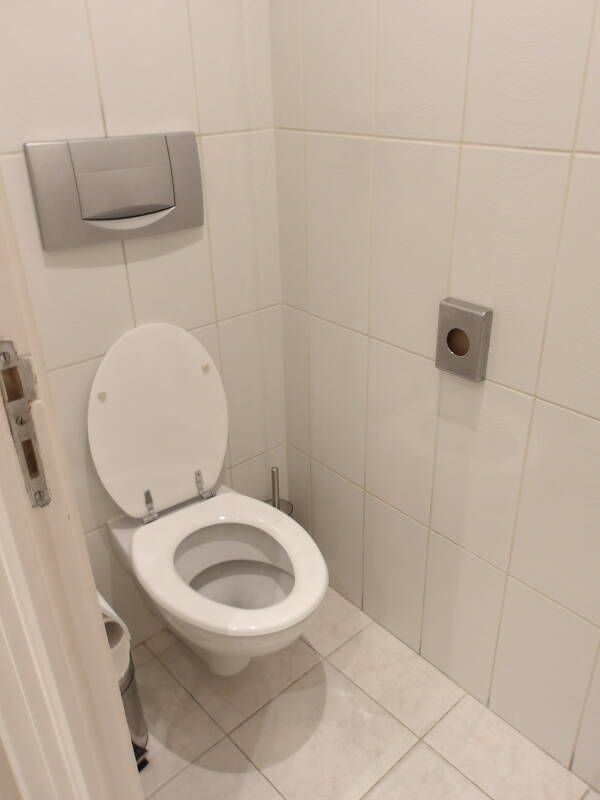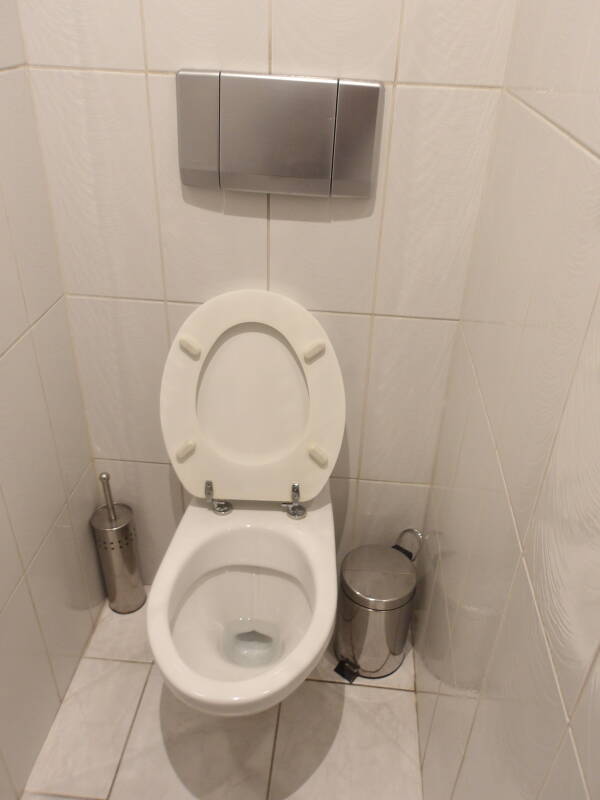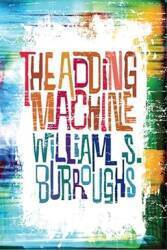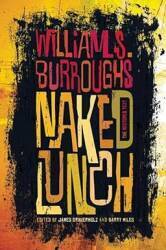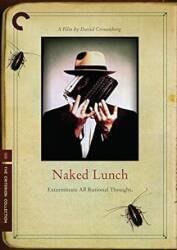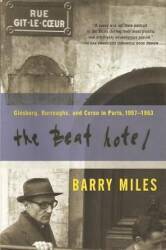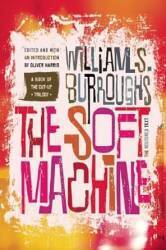
The Left Bank's "Beat Hotel"
Toilets of the "Beat Hotel" on the Left Bank in Paris
9 rue Gît-le-Cœur
was home to a bottom-end hotel or pension
in the 1930s into the early 1960s.
It never had a proper name,
but the poet Gregory Corso,
the youngest of the so-called "Beat Generation" movement,
repeatedly called it "the Beat Hotel"
and that name stuck.
The Beat Hotel closed in 1963 after
a few years of serving as
the unofficial Paris headquarters
of the Beat movement.
Today it's a four-star hotel.
But you can examine the pictures of various Beat figures
displayed in the lobby — Corso,
William S. Burroughs,
Allen Ginsberg,
Brion Gysin,
and others.
And, if you ask nicely, you can use the bathroom!
The Street — rue Gît-le-Cœur
This is Paris, near the point where the city was originally founded, so the history goes way back. A Celtic tribe called the Parisii inhabited the area from around the middle of the third century BCE. One of the area's main north-south trading routes crossed the Seine river via the narrow island today known as Île de la Cité. A settlement grew up there, taking its name from the Parisii tribe.
The Romans conquered the area in 52 BCE and established a settlement on the river's south bank. That was the left bank looking downstream, and "Left Bank" became the name for that area.
Clovis, King of the Franks, the first king of the Merovingian dynasty, made Paris his capital in 508 CE. In 558 Childebert I, the son of Clovis, founded a Benedictine abbey near here.
The abbey had a church, of course, but it was destroyed by Norsemen raids in the late 9th century and rebuilt.
The church was rebuilt in the eleventh century in what was then the new Gothic style, and in the twelfth century they added the first flying buttresses in Paris. The abbey complex became wealthy and important, and was a center for scholarship known for its illuminated manuscripts.
The church still exists, it's now called the Church of Saint-Germain-des-Prés. It's the oldest existing church in Paris.
Around 1200 CE a street was opened through what had been vineyards belonging to the Saint-Germain-des-Prés abbey. That has evolved over the following 800 years into the 120-meter-long street you see today.
Documents in the 1300s referred to the street as Gilles-Queux or Gui-le-Queux, meaning "Gilles or Gui the Cook". It went through a series of names with meanings drifting through the centuries. Today's name Gît-le-Cœur in Modern French means "Lies the Heart".
Properties along the street were associated with influential figures — the Bishop of Chartres, the Bishop of Paris, the Archbishop of Besançon. Louis de Sancerre, and the Counts of Artois. During the second quarter of the 16th century, King Francis I acquired a building along this street and had it rebuilt as a residence for his primary mistress.
Most of the buildings along the street today date from the late 16th to late 18th centuries, something like the 1580s through the 1780s. When the street was flooded in 1910, the buildings then look very much like the ones today.
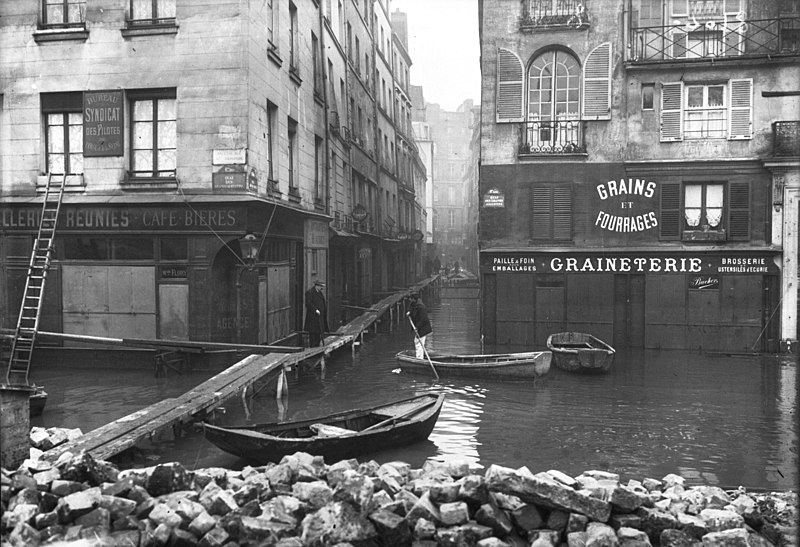
January 1910 flood of the Seine across Quai des Grand-Augustins and up rue Gît-le-Cœur, from Bibliothèque nationale de France.
From the 18th century to the late 20th century, the street was a center of the book-selling business in Paris. The literary-minded Beat group was staying here because it was extremely cheap while in the heart of the academic and artistic Left Bank. Many of their concerns were more associated with the publishers, especially Burroughs with his ongoing struggle to find someone willing to print his controversial Naked Lunch. The sales after the books had been printed would be a later step.
The Trip
Toilets ofMorocco
It was a long strange trip. It started with some very good offers from Iceland Air, round trip between the U.S. and Europe with a free 3-day layover in Reykjavik. OK, four weeks Chicago to Paris and back.
Then I added two weeks in Morocco, revisiting Marrakech and Tangier.
I had re-read Naked Lunch while in Tangier a year before. Burroughs' novels are very tough going, his autobiographical non-fiction like Junky and The Yage Letters, and his essay collections like The Adding Machine are much better reading. I had taken The Adding Machine along to re-read in Tangier.
One day in Paris I had gone to Musée d'Orsay for a special exhibit of Van Gogh's late work. I had brought The Adding Machine with me as I planned to return via the Latin Quarter and the former "Beat Hotel". I could use the book as cover or an excuse.
I stopped for a late lunch of a croque-madame, a sandwich of ham and sliced cheese, topped with grated cheese, and then baked in an oven or fried, with a lightly fried egg on top.
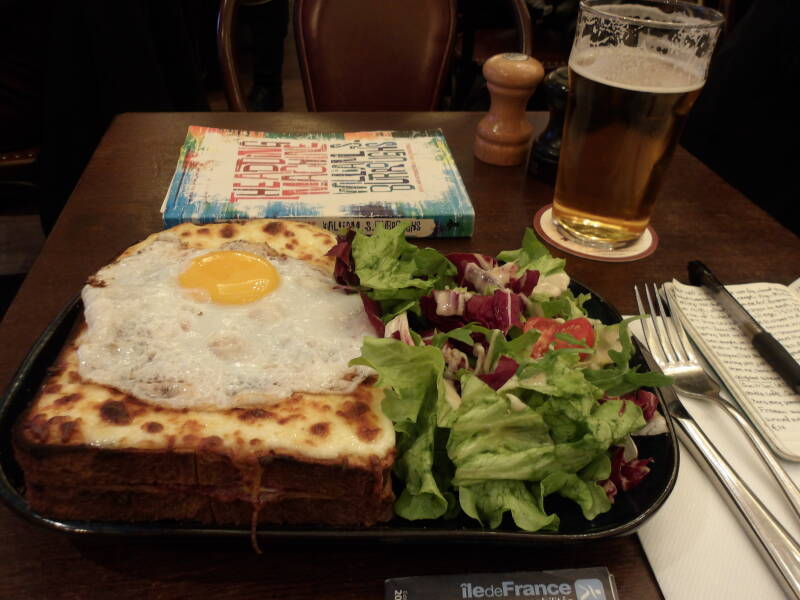
Rue Gît-le-Cœur Today
Quai des Grands Augustins is a multi-lane one-way street running west along the south bank of the Seine. Across Île de la Cité and the other branch of the river, Quai de la Mégisserie is a corresponding one-way primary street running east along the Seine's north bank.
Place Saint-Michel is a large square where the historic bridge Pont Saint-Michel crosses the Seine. It's just beyond the bus you see below. Cathédrale Notre-Dame de Paris is one bridge further up the Seine. The Beats were staying in a nice area.
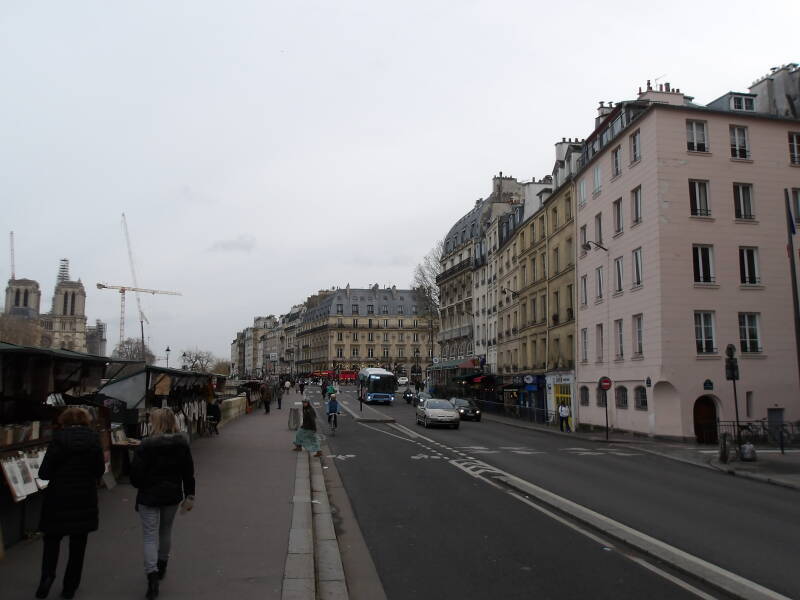
Rue Gît-le-Cœur opens onto Quai des Grands Augustins at the corner with the white building at the right of the above picture. Below we're looking up that side street.
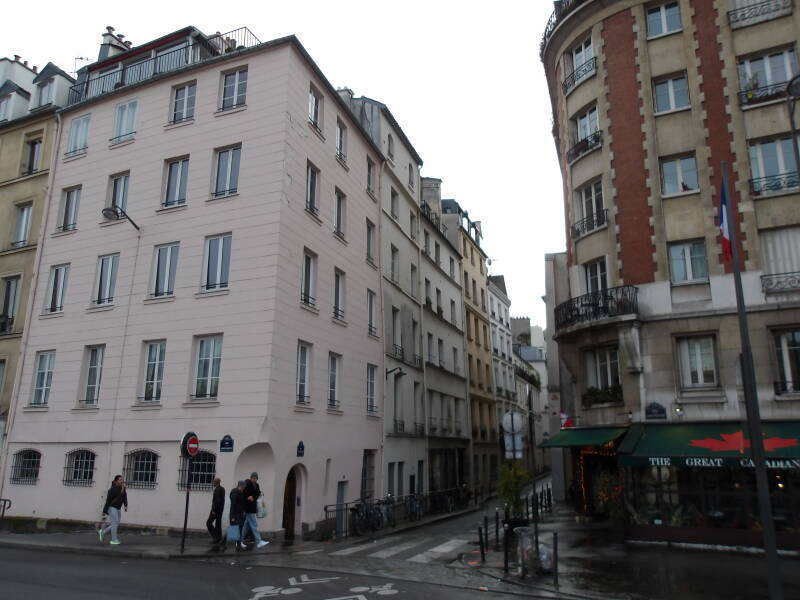
Yes, this is the corner, there are the street signs.
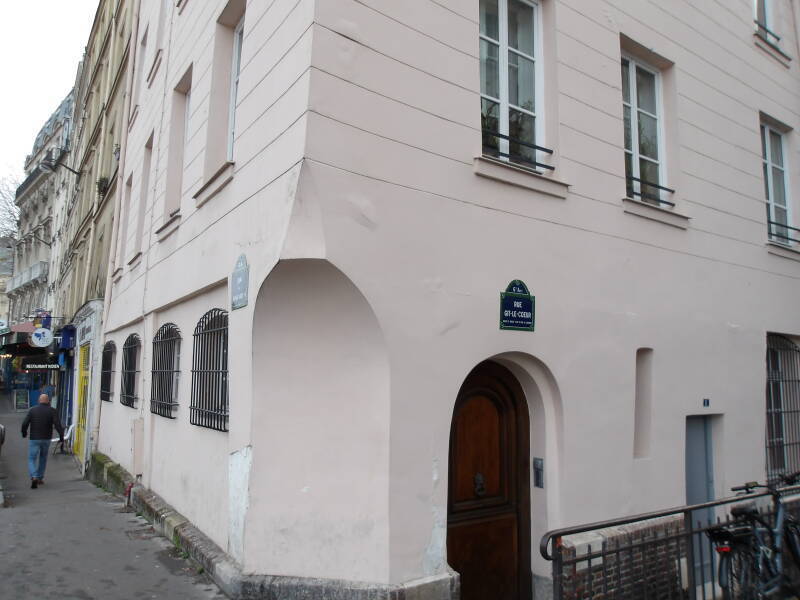
Here is the view up the entire length of rue Gît-le-Cœur. The former pension is part-way along on the left, with a white sign protruding from the building's face. At the near right is a shop with a sign saying they buy and sell books.
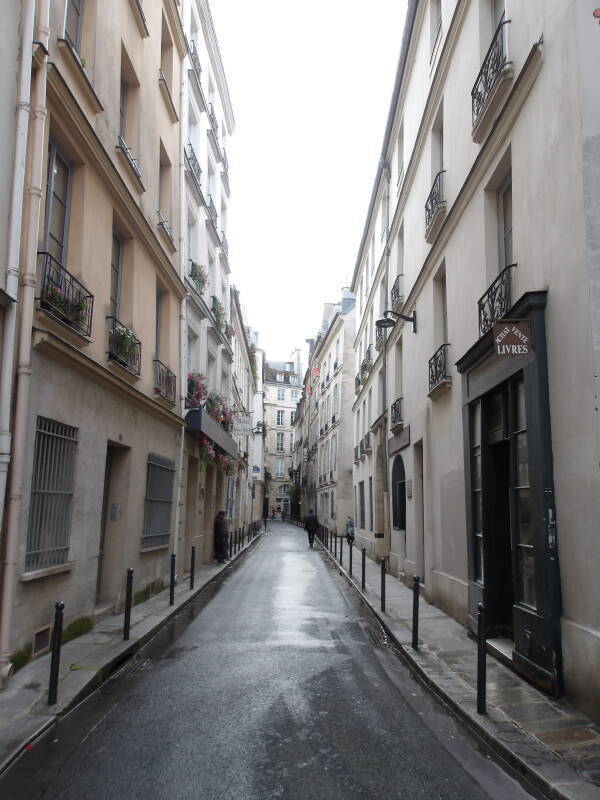
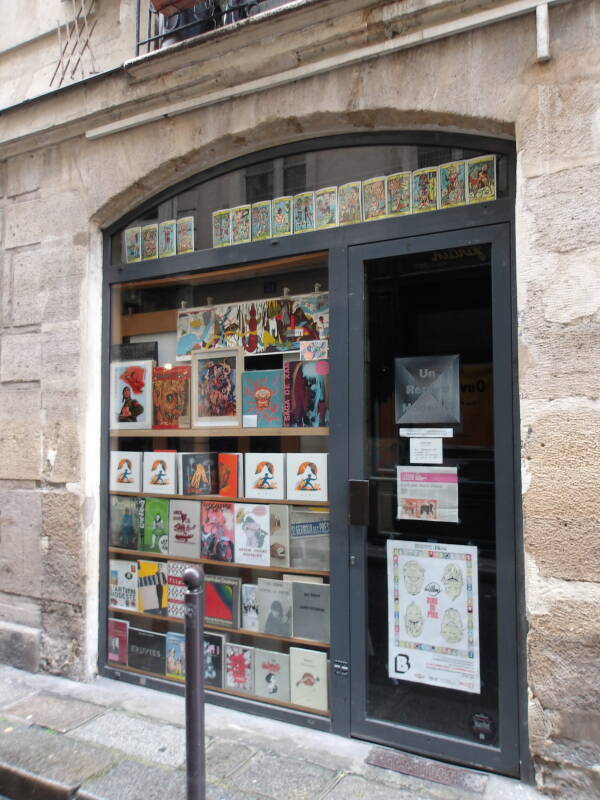
Further along, seen above, is another specialist book seller.
Below is the façade of the former pension.
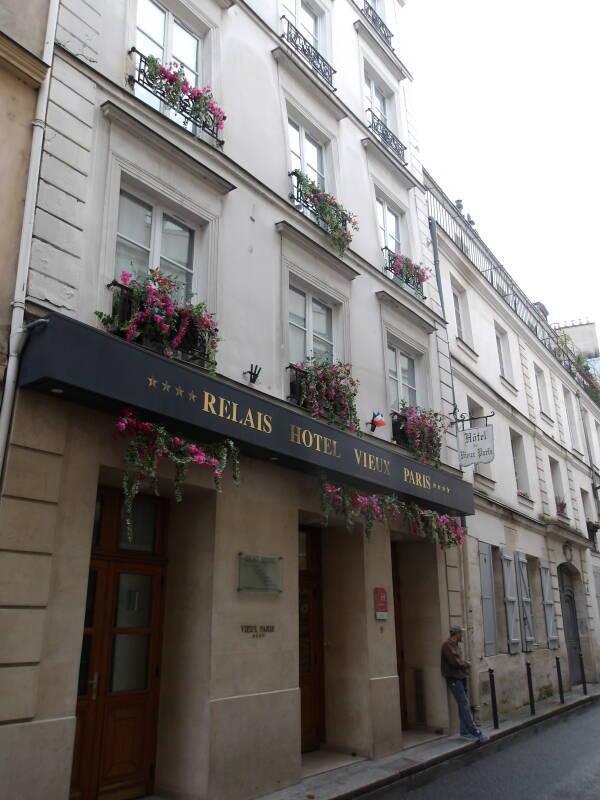
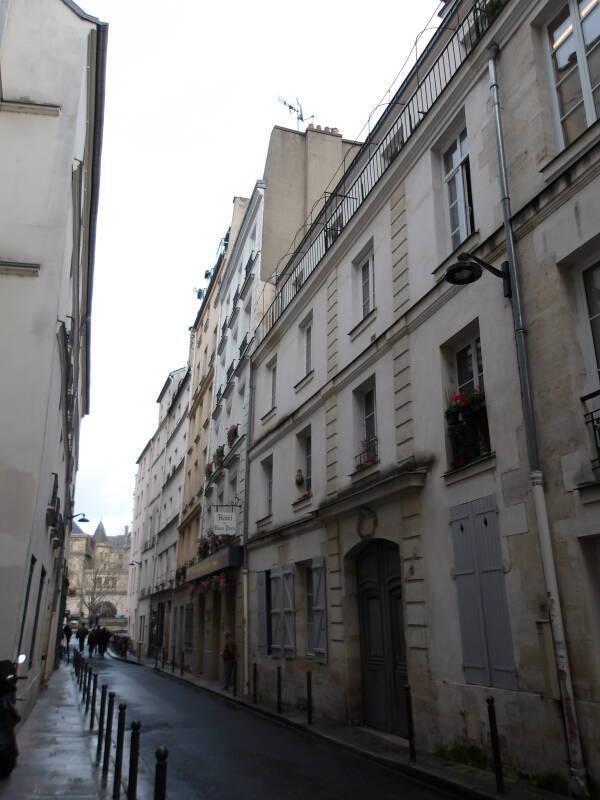
Above is the view further into rue Gît-le-Cœur looking back toward the river.
When It Was the "Beat Hotel"
The bottom-end pension that came to be called the "Beat Hotel" had 42 rooms. A few were on the front face with windows onto the narrow street, but most of them were quite dark, with windows opening into the interior stairwell.
French accommodations have, for a long time, been assigned government ratings based on a formulaic analysis you could complete with a check-list. This one was a "class 13" hotel, the very bottom end of the list of defined classes. It was required by law to meet the minimum health and safety standards, and that was it.
Jim Morrison's Bidet and Sink in ParisAs for its plumbing, there were shared toilets, probably one per floor sharing their supply and waste lines in a column. There was one bathtub, on the ground floor, where there was also a small bistro. Hot water was available on Thursday, Fridays, and Saturdays. A resident had to reserve the tub and pay the surcharge for hot water in advance.
In theory, to comply with the legal minimums, linen was changed every month. Curtains and bedspreads were washed annually, in the spring.
A married couple, Monsieur and Madame Rachou, managed the pension beginning in 1933. He was killed in a traffic accident in 1957, leaving Madame Rachou in charge.
Claude Monet's Bathroom, Kitchen, and Artistic Hydraulic ProjectMonsieur and Madame Rachou, or at least Madame, had worked in a hotel where Claude Monet and Camille Pissarro had frequently stayed. That led her to encourage artists and writers to stay at the pension, and even allow them to pay with paintings and manuscripts. The permission to paint and decorate their rented rooms however they wished, and for that to serve as partial rent, appealed to the artistic bohemian movement.
As for graphical art in return for lodging, Toronto's Art Gallery of Ontario has what appears to be an unusually shaped painting by Claude Monet, in an elaborate gilded frame. It's actually one of two paintings he made on the doors of an armoire in a hotel in Étretat, depicting the coastal rock formations there. That hotel had several dozen door panels painted by various artists hanging in the dining room.
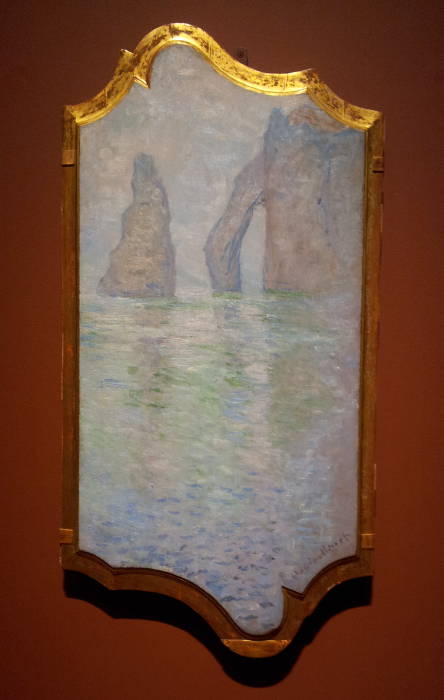
Étretat, l'Aiguille et la Porte d'Aval, Claude Monet, 1885-6, the Art Gallery of Ontario, Toronto.
Are artworks and literature in return for basic accommodations any worse than the so-called "influencers" requesting luxury in return for on-line promotion? No. Nothing is worse than "influencers".
The painter Guy Harloff was living at the pension in 1957, the year of Monsieur Rachou's death, when he recommended it to Gregory Corso. Corso began calling it the "Beat Hotel" as he spread the word about it in the Beat movement.
Allen Ginsberg had met William S. Burroughs and Jack Kerouac in the early 1940s at Columbia University in New York, forming the original core of the "Beat Generation". Ginsberg is best known for his poem "Howl", which led to an obscenity trial in 1957 for its discussion of both heterosexual and homosexual acts when sodomy laws made male homosexual acts a crime in every state in the U.S. Gregory Corso (1930–2001) was the youngest of the Beat group, while Burroughs (1914–1997) was the oldest.
William S. Burroughs had been living in Tangier in the mid to late 1950s, working on a collection of writing that became his novel Naked Lunch and then heavily re-used in other novels and shorter works. Ginsberg and Kerouac had visited him there, attempting to help him organize an incoherent collection of writing into a book-like form. Burroughs had written the material while under the influence of a variety of opiates and opioids plus majoun, a hashish confection, so it's all rather non-linear.
Burroughsat Cafe Hafa
in Tangier
Ginsberg and Peter Orlovsky, a poet, actor, and long-time lover of Ginsberg, moved into the Beat Hotel in 1957. Burroughs arrived soon after. Ginsberg, acting as Burroughs' literary agent, and with relevant skill given his obscenity trial, helped Burroughs assemble pieces of his writing into what would be published as Naked Lunch. The standard history of it is that it was submitted to the publisher, the Paris-based Olympic Press, as a series of very loosely related vignettes. Under a scheduling deadline, the order in which the proofs were returned from the publisher largely drove the final chapter order.
On the 50th anniversary of its publication, a plaque commemorating Burroughs, his most famous work, and other residents of that time was installed on the hotel's exterior.
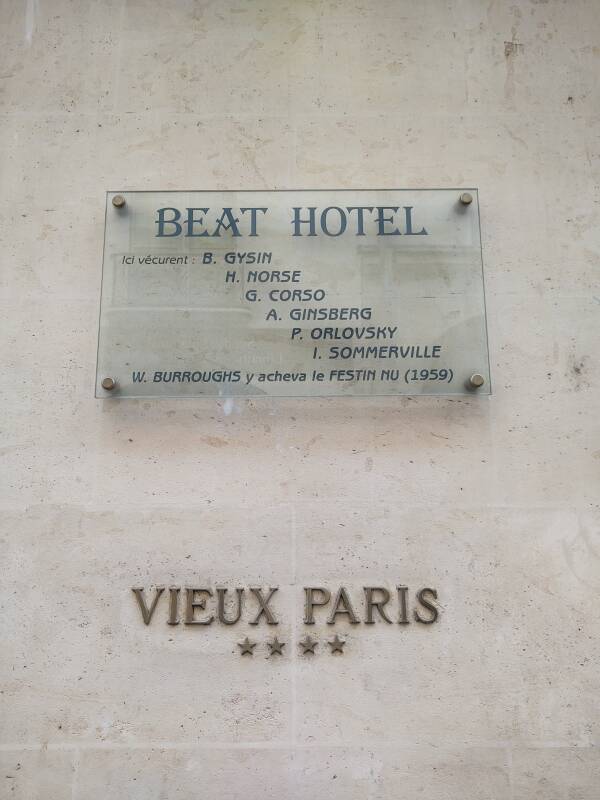
I suppose that there could be some literary version of art in payment for lodging. Burroughs could knock off a quick story about going through heroin withdrawal during pederasty sessions in Latin America and the Tangier International Zone, a tale awash in semen, blood, and rectal mucus. If you've read Naked Lunch and are looking for something that's similar, but more so, featuring even more of the aforementioned fluids, I suggest The Soft Machine.
Other beat figures followed.
Brion Gysin was a painter, writer, and performance artist, and he developed some experimental devices. He collaborated with Burroughs on several projects.
Ian Sommerville was an electronics technician and computer programmer who became involved with the group. Around 1960, he programmed a random-number generator that Brian Gysin used in his "cut-up" technique, and in 1961 collaborated with Gysin in building the "Dreamachine", a stroboscope intended to modify the viewer's neural alpha wave activity. He became Burroughs' "systems advisor" and lover.
Harold Norse was an influential writer.
Madame Rachou sold the pension in early 1963, and that was the end of the Beat Hotel.
The building was gutted out and rebuilt, opening as the Vieux Paris hotel that meets the current four-star criteria. Again, in France, the number of stars a hotel may legally use in their marketing is based on a formulaic system. This is worlds away from the "class 19" of 1960.
Inside the Hotel Today
Here's a view through the entry door into the lobby.
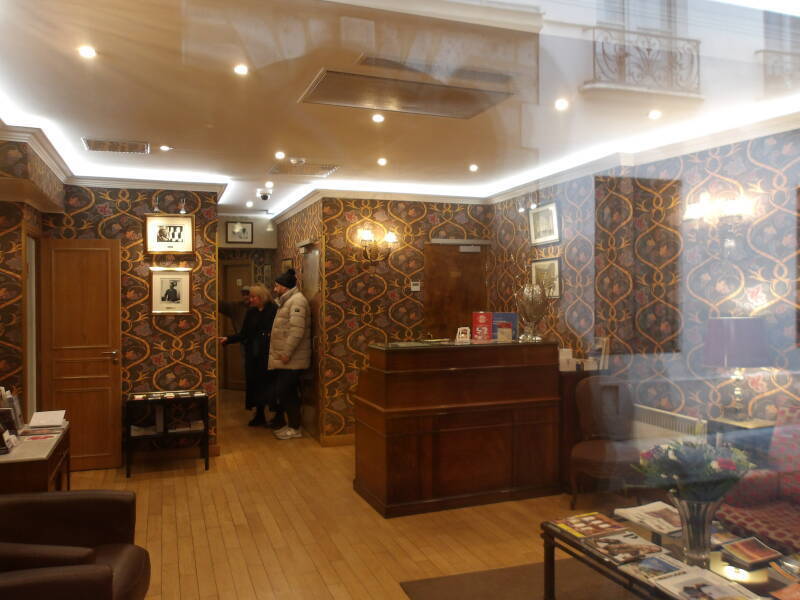
I came back on another day, after the Van Gogh exhibit and the croque-monsieur, looked around the lobby and examined the photographs they have of various Beat figures, and asked the manager if it would be OK if I sat there and read an essay or two. Certainly.
Below, the picture at top shows William S. Burroughs and Brion Gysin, probably photographed in the 1980s.
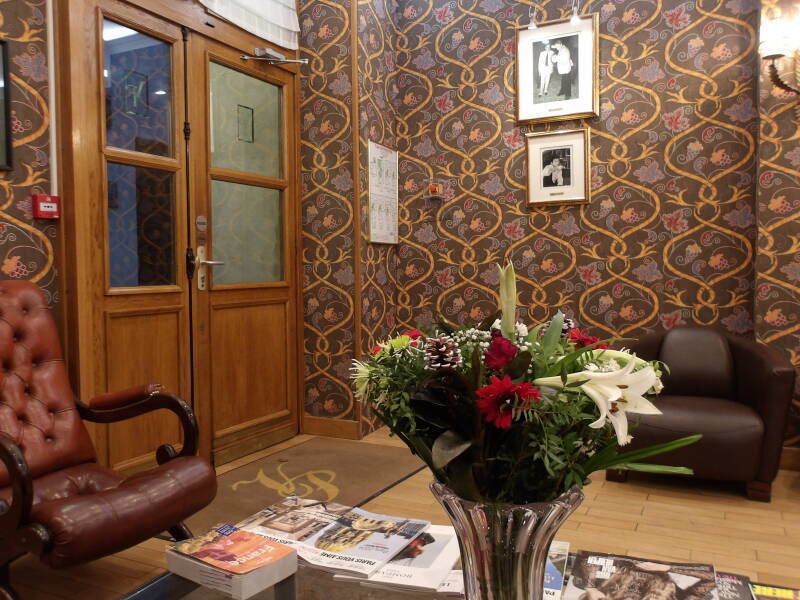
I also asked if I could use the W.C. It's back the hallway past the yellow elevator door.
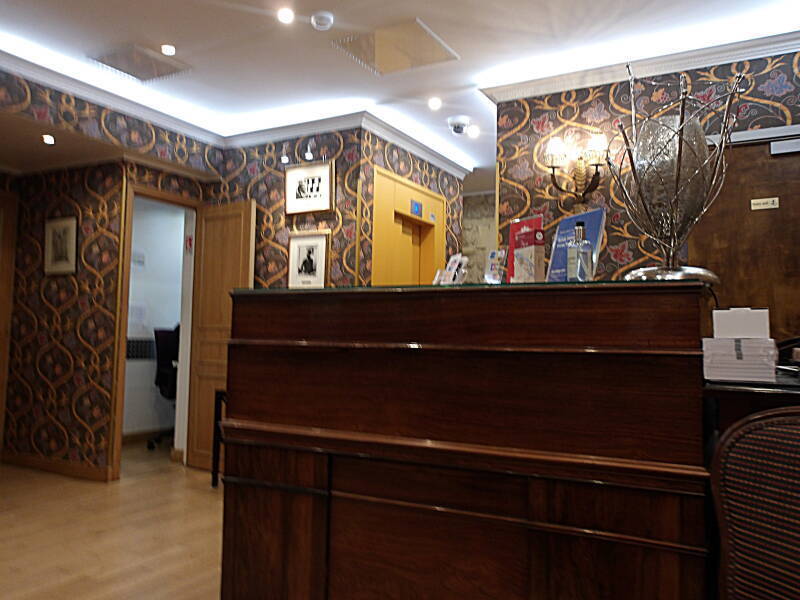
And here are the ground-floor toilets today. These are not at all like what the situation would have been in 1957–1963! There are two toilet compartments, the women's first and men's second below, sharing a sink area. Now there's hot water every day!
This is not the way it was in 1957–1963!
